The role of animals during World War One
- Published
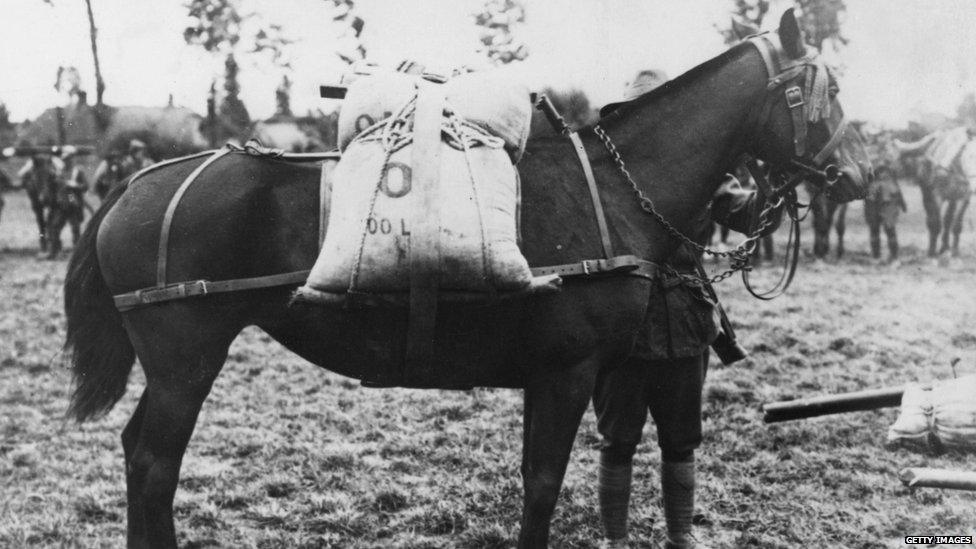
Before 1914, wars had mainly been fought by cavalries - soldiers who fought on horseback using swords and guns. But both sides soon realised men on horses could not win the war in the trenches, so they were used for transportation instead.
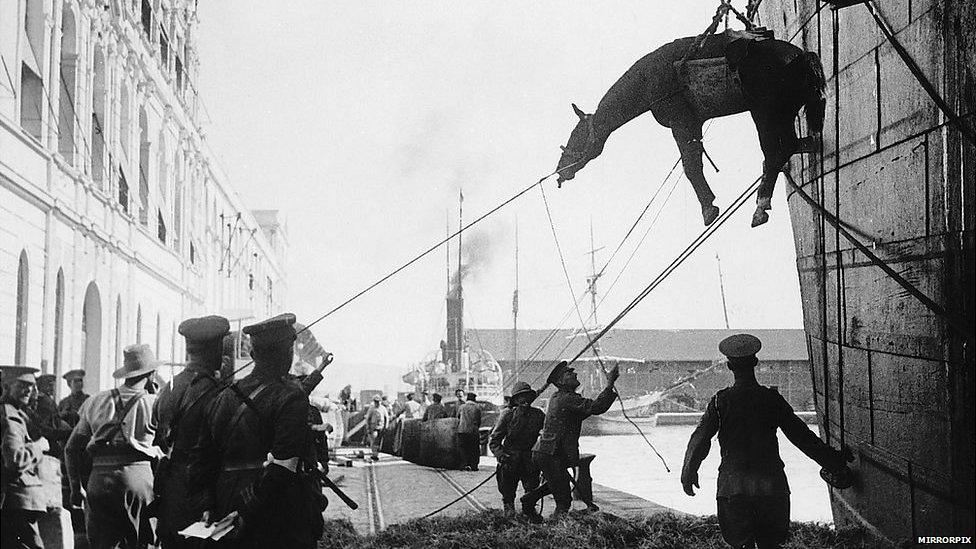
Ambulance horses carried wounded soldiers and artillery horses carried weapons, ammunition and other heavy loads. They had to be strong. Here allied cavalry troops' horses are lowered down in a sling onto the quayside as they arrive in Salonika, Greece.
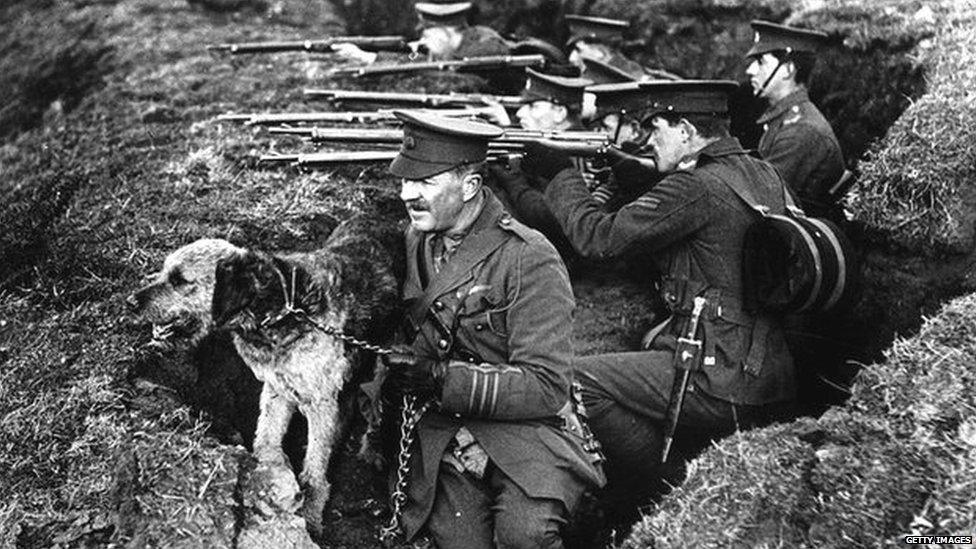
Dogs were some of the hardest and most trusted workers in World War One. The most popular dogs were medium-sized, like Doberman Pinschers and German Shepherds. A dog is seen here alongside soldiers in a trench in 1914.
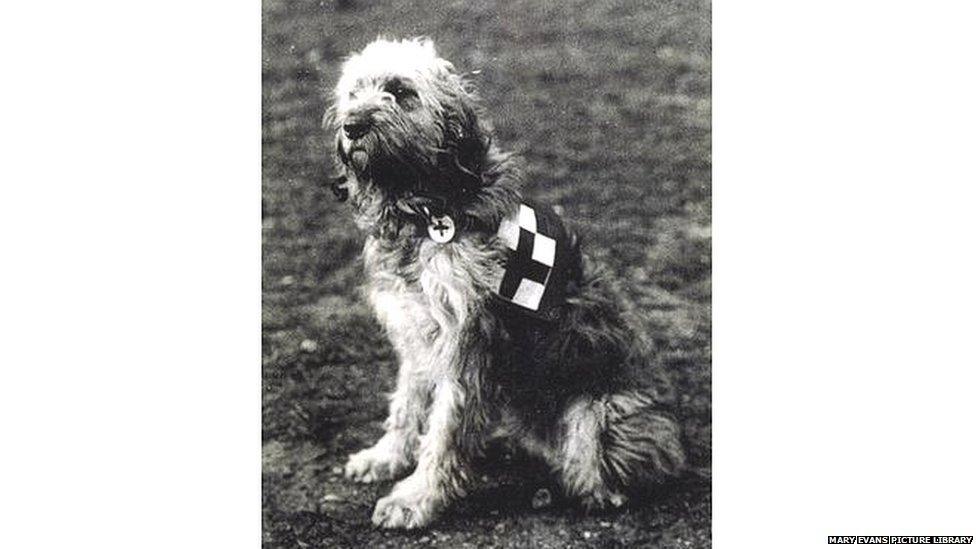
This is a casualty dog - they were trained to find wounded or dying soldiers on the battlefield. They carried medical equipment so an injured soldier could treat himself and they would also stay beside a dying soldier to keep him company.
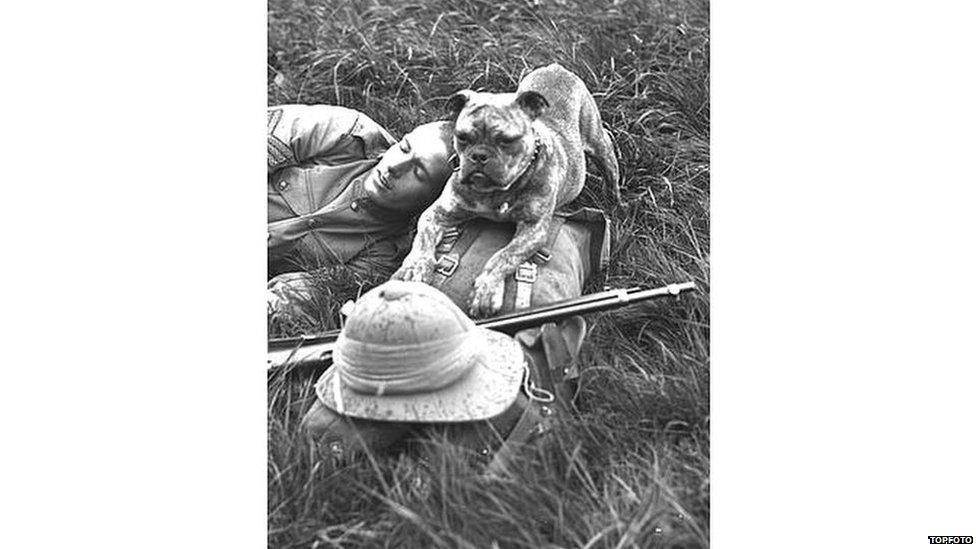
Sentry dogs stayed with one soldier or guard and were taught to give a warning sound such as growling or barking when they sensed a stranger in the area or close to camp. Many Dobermans were also used as sentry dogs.
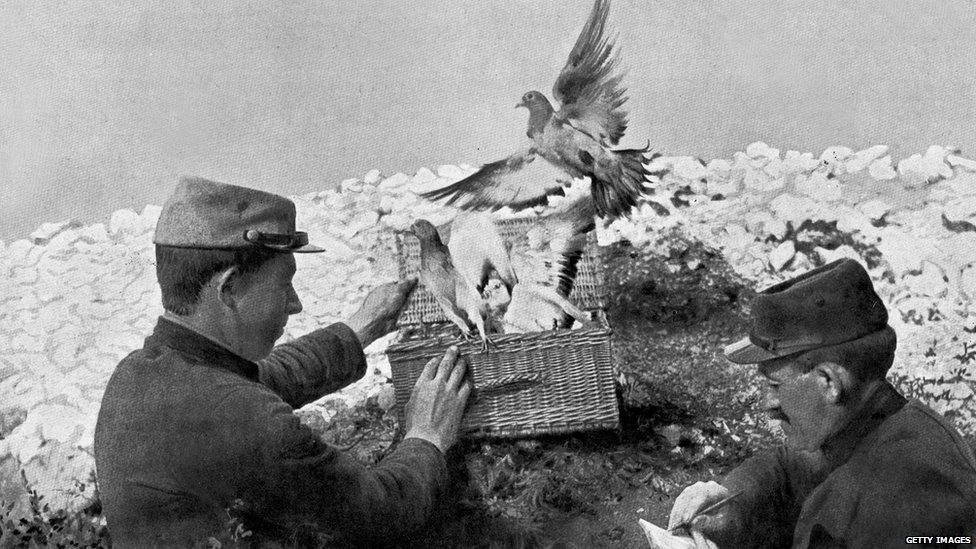
Animals were also often the most reliable way to transport messages. 100,000 carrier pigeons were used as messengers during the war. Pigeons always flew home when released, so the troops made sure the pigeons' nests were in places they needed to send messages.
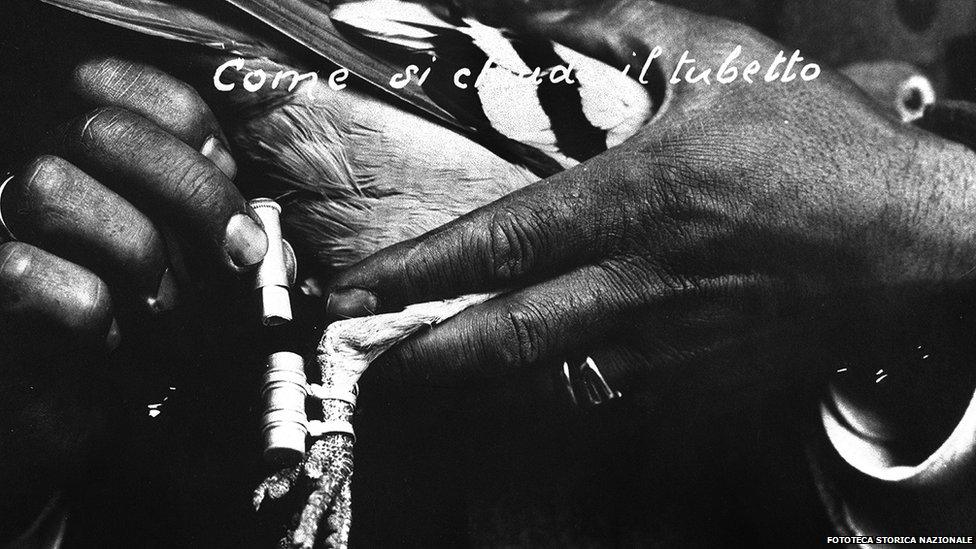
A message being attached to a pigeon's leg in Italy in 1915. Records say pigeons delivered 95% of their messages correctly. Pigeons were kept at military bases and even in old London buses, which were brought over from England.
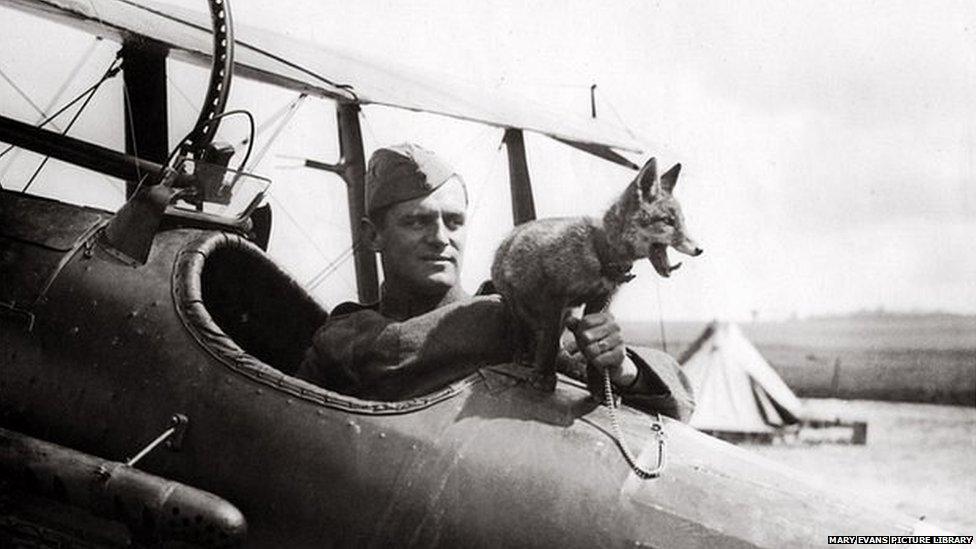
There are many stories of animals who became companions to soldiers during World War One. Here is an RAF fox mascot sitting on a plane with the pilot during World War One.
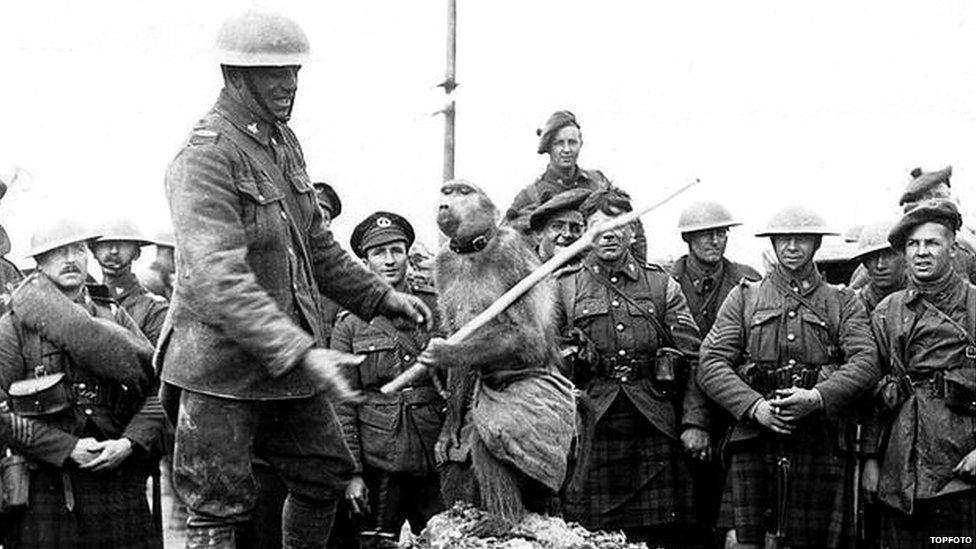
Jackie the baboon was taken to France by South African soldiers. Jackie had excellent eyesight and hearing and used to warn soldiers of enemy movement or possible attacks by making noises and tugging on their clothing.
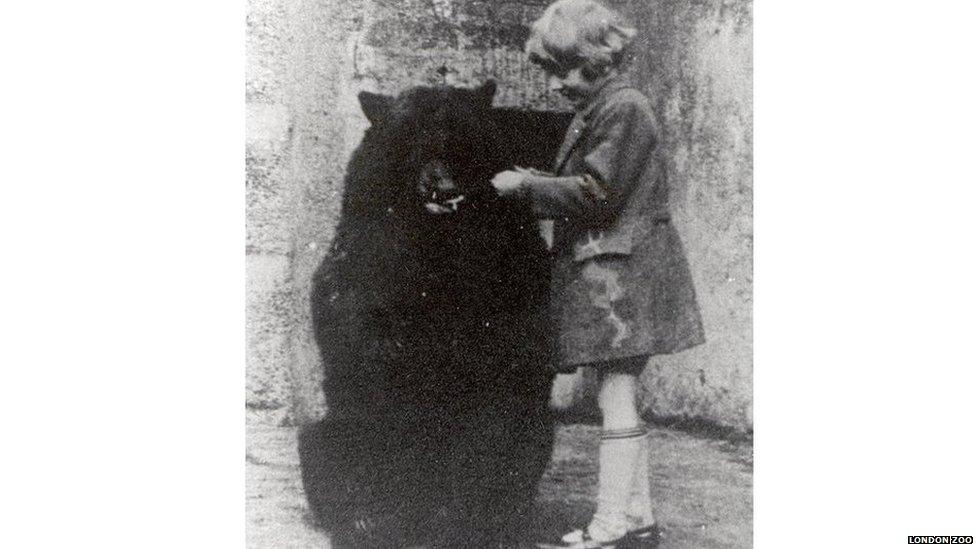
Winnipeg, known as Winnie for short, was an American black bear who was a mascot to Canadian soldiers. The Canadians gave Winnie to London Zoo in 1914. The writer AA Milne took his son Christopher Robin to see Winnie at the zoo. Christopher liked Winnie so much, it inspired his father to write the famous series of stories about Winnie the Pooh.
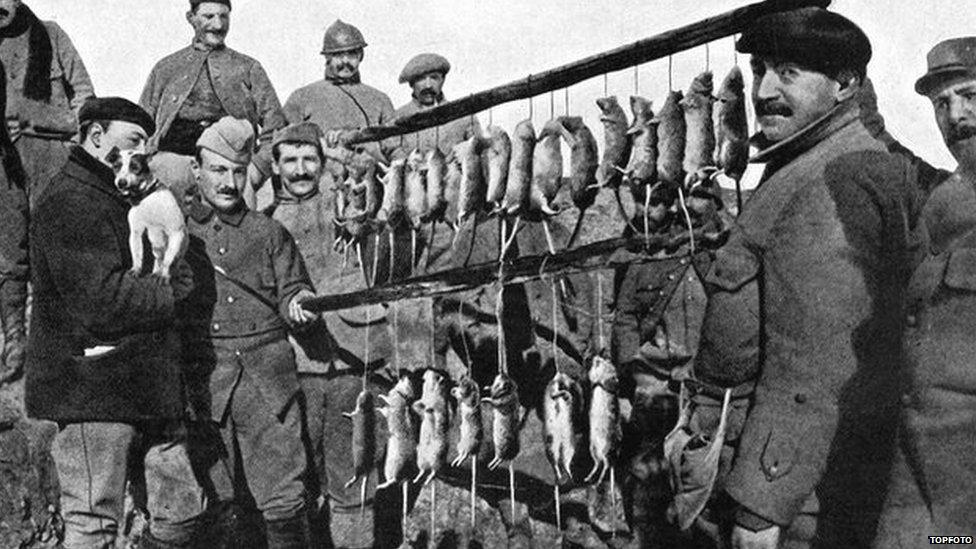
Soldiers living in trenches encountered millions of pests during the war including rats. They fed on rotting food because there was no proper way of getting rid of rubbish in the trenches. A little terrier dog shows off its catch after a 15 minute rat hunt in French trenches in September 1916.
